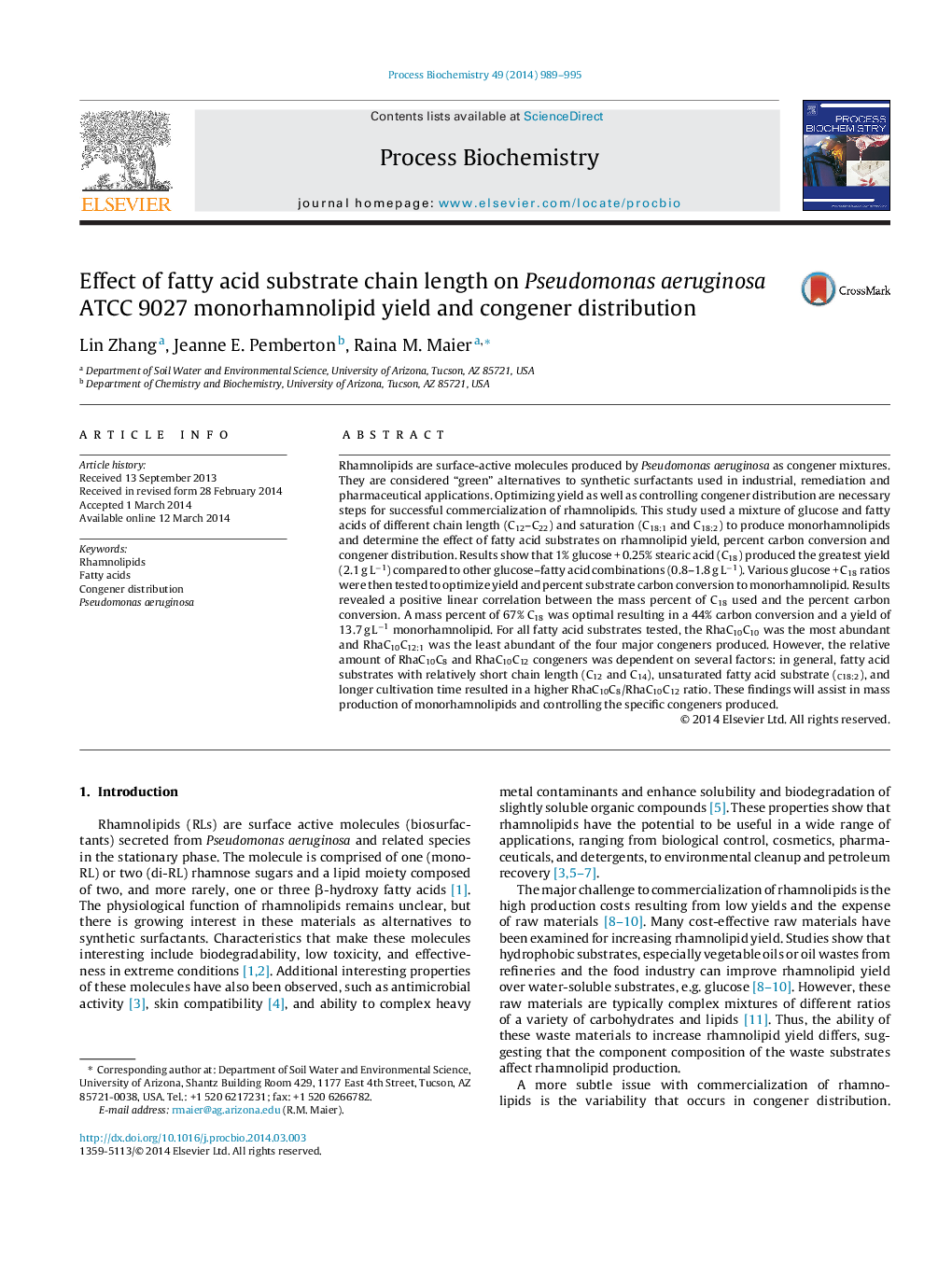| کد مقاله | کد نشریه | سال انتشار | مقاله انگلیسی | نسخه تمام متن |
|---|---|---|---|---|
| 34376 | 45020 | 2014 | 7 صفحه PDF | دانلود رایگان |

• High yields of rhamnolipid were achieved using glucose and fatty acid as co-substrates.
• Optimal yield was achieved with stearic acid (C18) as a co-substrate.
• Optimal percent substrate carbon conversion to rhamnolipid was 44%.
• Fatty acid co-substrate chain length influenced rhamnolipid congener distribution.
Rhamnolipids are surface-active molecules produced by Pseudomonas aeruginosa as congener mixtures. They are considered “green” alternatives to synthetic surfactants used in industrial, remediation and pharmaceutical applications. Optimizing yield as well as controlling congener distribution are necessary steps for successful commercialization of rhamnolipids. This study used a mixture of glucose and fatty acids of different chain length (C12–C22) and saturation (C18:1 and C18:2) to produce monorhamnolipids and determine the effect of fatty acid substrates on rhamnolipid yield, percent carbon conversion and congener distribution. Results show that 1% glucose + 0.25% stearic acid (C18) produced the greatest yield (2.1 g L−1) compared to other glucose–fatty acid combinations (0.8–1.8 g L−1). Various glucose + C18 ratios were then tested to optimize yield and percent substrate carbon conversion to monorhamnolipid. Results revealed a positive linear correlation between the mass percent of C18 used and the percent carbon conversion. A mass percent of 67% C18 was optimal resulting in a 44% carbon conversion and a yield of 13.7 g L−1 monorhamnolipid. For all fatty acid substrates tested, the RhaC10C10 was the most abundant and RhaC10C12:1 was the least abundant of the four major congeners produced. However, the relative amount of RhaC10C8 and RhaC10C12 congeners was dependent on several factors: in general, fatty acid substrates with relatively short chain length (C12 and C14), unsaturated fatty acid substrate (C18:2), and longer cultivation time resulted in a higher RhaC10C8/RhaC10C12 ratio. These findings will assist in mass production of monorhamnolipids and controlling the specific congeners produced.
Journal: Process Biochemistry - Volume 49, Issue 6, June 2014, Pages 989–995